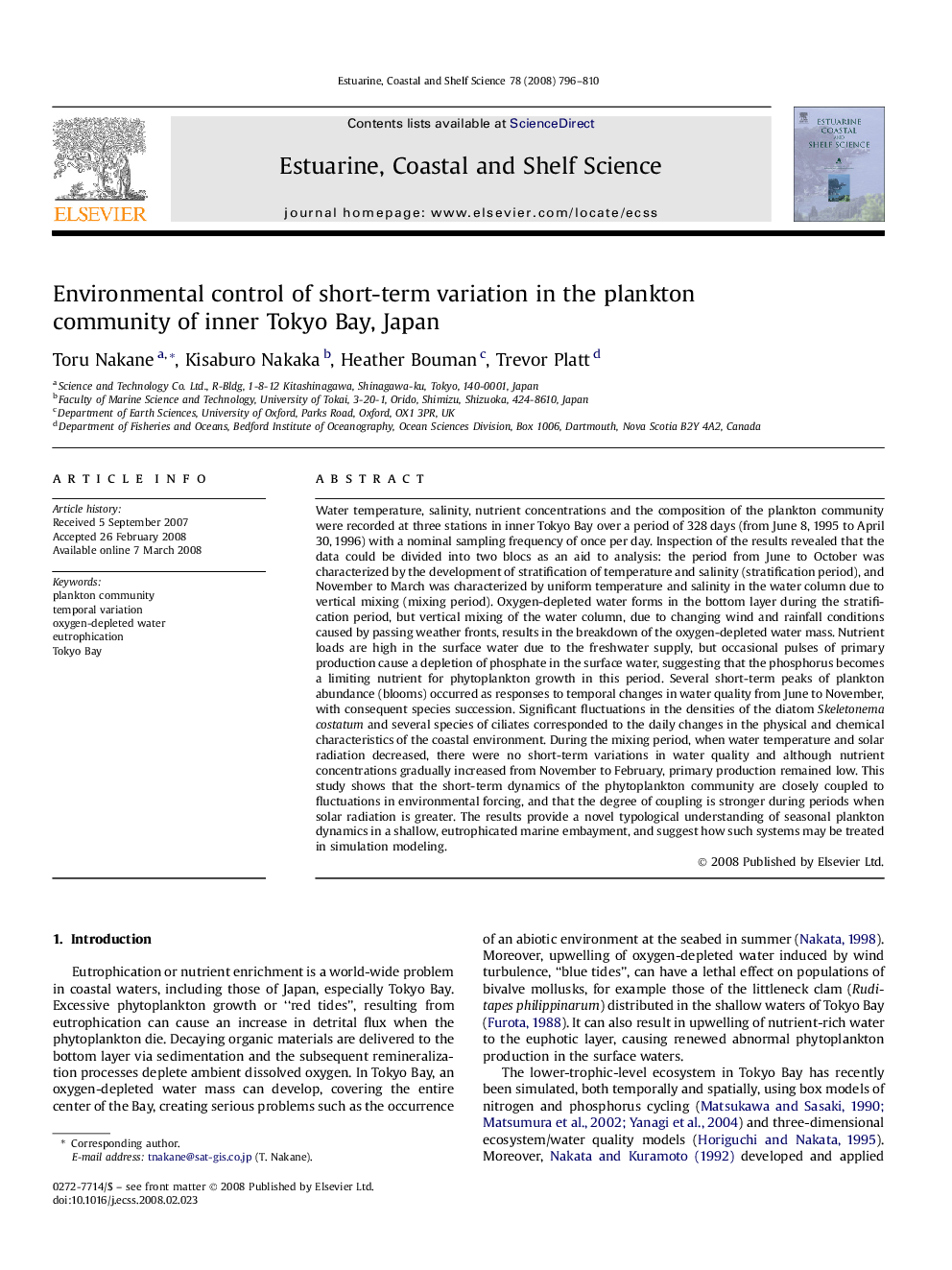| کد مقاله | کد نشریه | سال انتشار | مقاله انگلیسی | نسخه تمام متن |
|---|---|---|---|---|
| 4541631 | 1326732 | 2008 | 15 صفحه PDF | دانلود رایگان |

Water temperature, salinity, nutrient concentrations and the composition of the plankton community were recorded at three stations in inner Tokyo Bay over a period of 328 days (from June 8, 1995 to April 30, 1996) with a nominal sampling frequency of once per day. Inspection of the results revealed that the data could be divided into two blocs as an aid to analysis: the period from June to October was characterized by the development of stratification of temperature and salinity (stratification period), and November to March was characterized by uniform temperature and salinity in the water column due to vertical mixing (mixing period). Oxygen-depleted water forms in the bottom layer during the stratification period, but vertical mixing of the water column, due to changing wind and rainfall conditions caused by passing weather fronts, results in the breakdown of the oxygen-depleted water mass. Nutrient loads are high in the surface water due to the freshwater supply, but occasional pulses of primary production cause a depletion of phosphate in the surface water, suggesting that the phosphorus becomes a limiting nutrient for phytoplankton growth in this period. Several short-term peaks of plankton abundance (blooms) occurred as responses to temporal changes in water quality from June to November, with consequent species succession. Significant fluctuations in the densities of the diatom Skeletonema costatum and several species of ciliates corresponded to the daily changes in the physical and chemical characteristics of the coastal environment. During the mixing period, when water temperature and solar radiation decreased, there were no short-term variations in water quality and although nutrient concentrations gradually increased from November to February, primary production remained low. This study shows that the short-term dynamics of the phytoplankton community are closely coupled to fluctuations in environmental forcing, and that the degree of coupling is stronger during periods when solar radiation is greater. The results provide a novel typological understanding of seasonal plankton dynamics in a shallow, eutrophicated marine embayment, and suggest how such systems may be treated in simulation modeling.
Journal: Estuarine, Coastal and Shelf Science - Volume 78, Issue 4, 30 July 2008, Pages 796–810